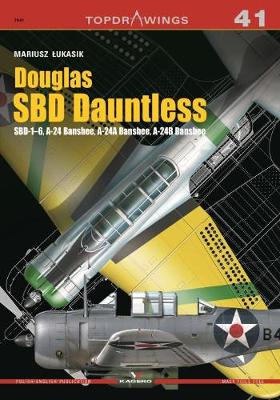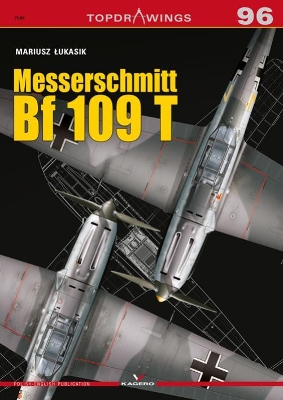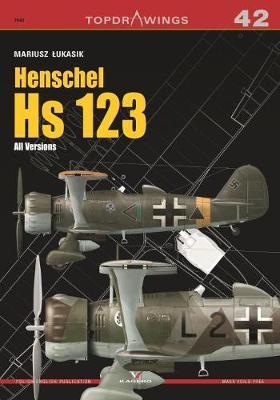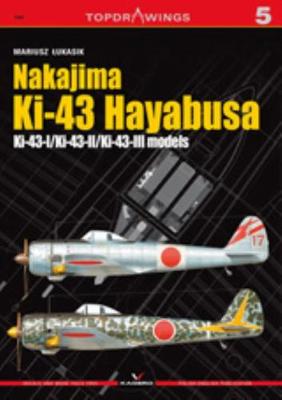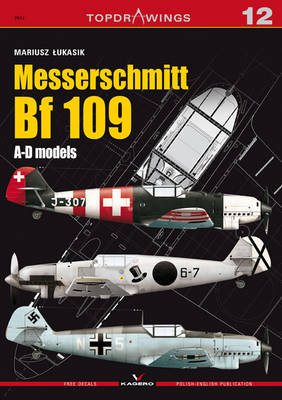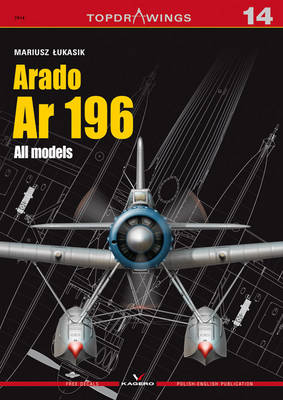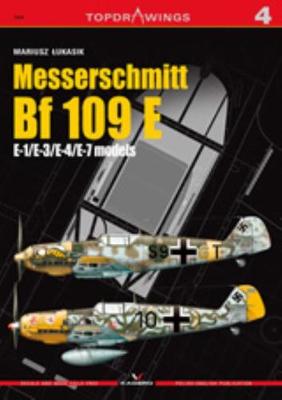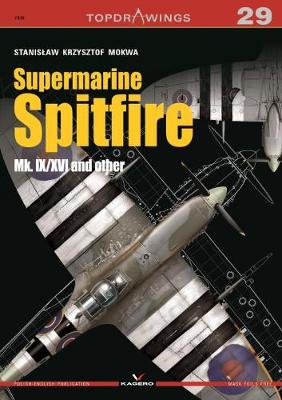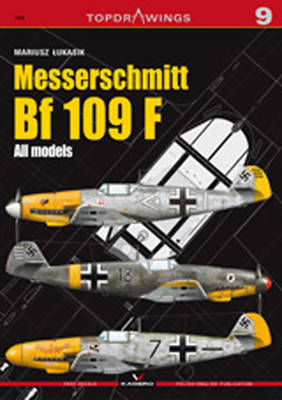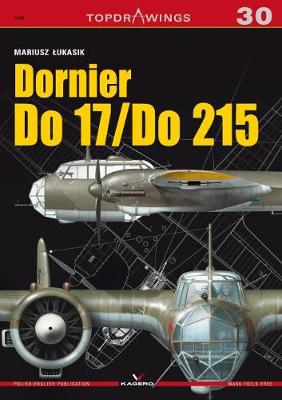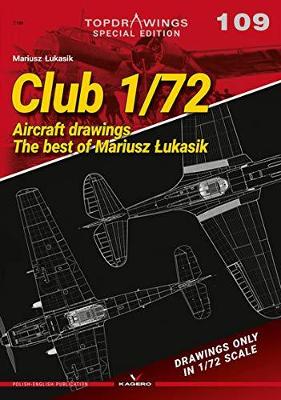Top Drawings
12 total works
This is a detailed technical guide to this formidable aircraft, and provides exceptional reference for any modeller or enthusiast.
About the Series
This series of highly illustrated books presents detailed scale drawings of aircraft and vehicles, with supporting colour profile artwork. With detailed captions on the history, combat action and development of each machine, each volume is an exceptional reference tool for modellers, with extras such as free decals, masking foil and photo-etched brass.
The book also contains colour profiles by Janusz Swiatlon for following 5 aircraft:
1. Bf 109 A “black 6-7”, piloted by Fw. Norbert Pingel of 2.I/88 Kondor Legion, Santander, Spain, August 1937
2. Bf 109 B-1 “black 6-34”, piloted by Oblt. Erich Woltke of 1.I/88 Kondor Legion, Spain, February 1938
3. Bf 109 D-1 W.Nr. 2302 “white J-307”, Switzerland, June 1945; national markings
4. Bf 109 D-1 “white N+5”, piloted by Lt. Joachim Bohner of 10.(N)/ZG, Germany, January 1940
5. Bf 109 D-1, Stab I/JG 131 Germany, Spring 1938
Complete with free decal sheet for each presented painting scheme.
About Top Drawings
This series of highly illustrated books present detailed scale drawings of aircraft and vehicles, with supporting colour profile artwork. With detailed captions on the history, combat action and development of each machine, each volume is an exceptional reference tool for modellers.
With the exception of the Arado design, they were all conventional biplanes. That gave the Arado better performance than any of the others, and the RLM ordered four prototypes. The RLM was also rather conservative by nature, so they also ordered two of the Focke-Wulf Fw 62 design as a backup. It quickly became clear that the Arado would work effectively, and only four prototypes of the Fw 62 were built.
The Ar 196 prototypes were all delivered in summer 1937, V1 (which flew in May) and V2 with twin floats as A models, and V3 and V4 on a single float as B models. Both versions demonstrated excellent water handling, and there seemed to be little to decide one over the other. Since there was a possibility of the smaller outrigger floats on the B models"digging in", the twin-float A model was ordered into production. A single additional prototype, V5, was produced in November 1938 to test final changes.
The final production version was the A-5 from 1943, which changed radios and cockpit instruments, and switched the rear gun to the much-improved MG 81Z. In all versions, 541 Ar 196s (526 production models) were built before production ended in August 1944, about 100 of these from SNCA and Fokker plants.
The 14th volume of the Topdrawings series is focused on the Arado Ar 196, German shipboard reconnaissance float plane. The 20 page, A4 size booklet contains 10 sheets of 1:48 scale drawings, 5 sheets of 1:72 scale drawings (which include a specification of external changes in various versions of the aircraft) and colour profiles of 4 planes, all with English and Polish captions.
The first major redesign of the Bf109 came with the E series, including the navalised variant of the Bf 109E, and the Bf 109T (T standing for Träger, or aircraft carrier). The Bf 109E, or 'Emil ' introduced a number of structural changes in order to accommodate the heavier, but significantly more powerful 1,100 PS Daimler-Benz DB 601 engine, the heavier armament and increased fuel capacity.
The 109E first saw service with the"Condor Legion" during the last phase of the Spanish Civil War and was the mainstay variant at the start of World War II through until mid-1941. This is a detailed technical guide to this formidable variant of an infamous aircraft, and provides exceptional reference for any modeller or enthusiast.
About the Series
This series of highly illustrated books presents detailed scale drawings of aircraft and vehicles, with supporting colour profile artwork. With detailed captions on the history, combat action and development of each machine, each volume is an exceptional reference tool for modellers, with extras such as free decals, masking foil and photo-etched brass.
A handful of Bf 109Fs were used operationally late in the Battle of Britain in 1940, but only become widespread in service in the first half of 1941, replacing the 109E.
A highly detailed selection of drawings and full colour profiles revealing the Bf 109F 'Frederich' and its sub-variants in 1/72, 1/48 and 1/32 scale. Includes pull-out drawings in 1/32 scale (Bf 109F-2/B and Bf 109F-4/R1), 4 pages of full-colour profiles, and decals representing selected profiles in 1/72, 1/48, and 1/32 scale.
About the Series
This series of highly illustrated books present detailed scale drawings of aircraft and vehicles, with supporting colour profile artwork. With detailed captions on the history, combat action and development of each machine, each volume is an exceptional reference tool for modellers, with extras such as free decals, masking foil and photo-etched brass.
Messerschmitt Bf 109 E, Messerschmitt Bf 109 E-B, Messerschmitt Bf 109 T, Messerschmitt Bf 109 F, Me 262 Schwalbe, Dornier Do 17/Do215, Curtis P-40, P-51 Mustang, SBD Dauntless, Ki 43 Hayabusa, Saab J29 Tunnan.
